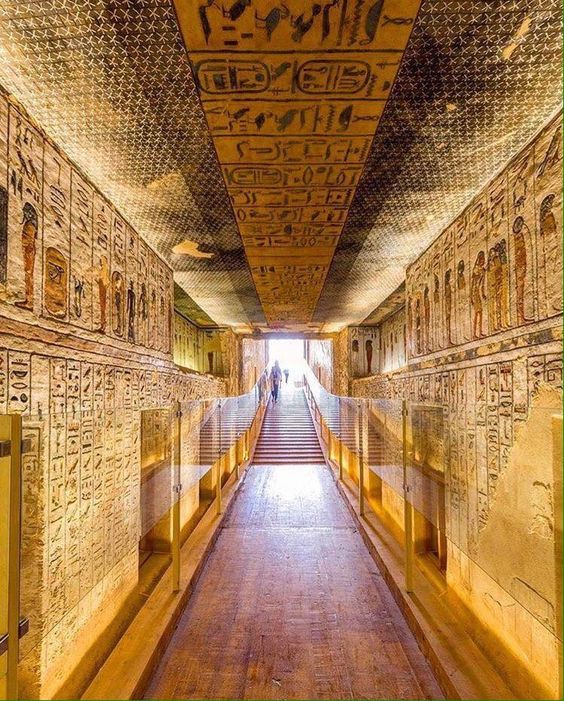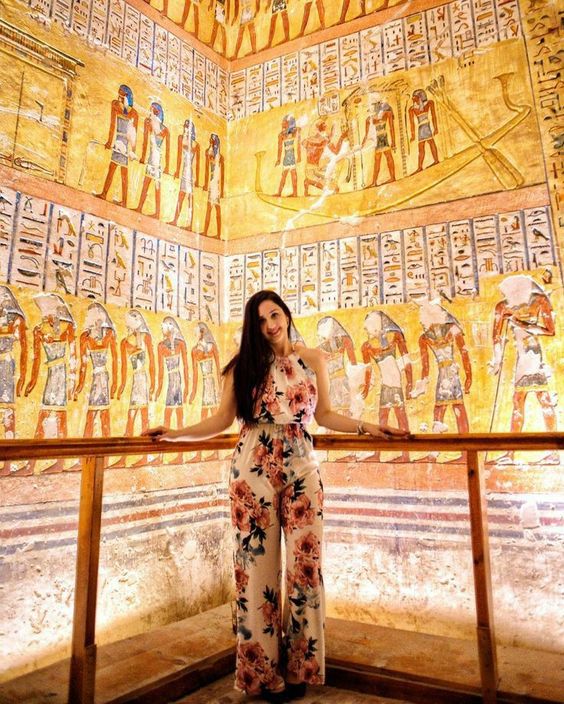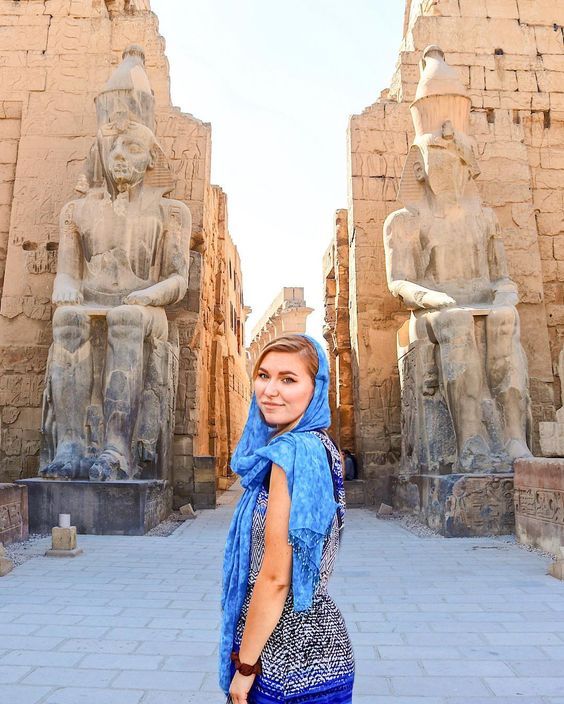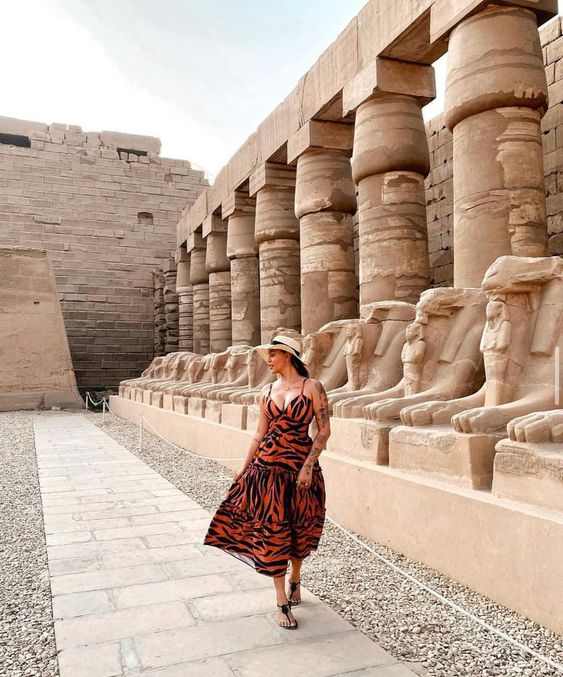Embarking on a 2-day trip from Hurghada to Luxor offers a captivating journey into ancient Egyptian history and majestic monuments. Departing from the Red Sea resort city, the adventure begins with a scenic drive through the Eastern Desert, unveiling a starkly beautiful landscape. Upon arrival in Luxor, known as the “world’s greatest open-air museum,” visitors delve into the treasures of the past. Highlights include the iconic Karnak and Luxor Temples, where colossal statues and intricately carved hieroglyphs tell tales of pharaohs and gods. The second day brings exploration of the Valley of the Kings, where royal tombs, including that of Tutankhamun, reveal their ornate chambers and millennia-old artifacts. A visit to the Temple of Hatshepsut and the Colossi of Memnon completes the journey, offering a glimpse into the grandeur of ancient Egypt amidst the modern comforts of Hurghada’s coastal charm.
Day 1: Hurghada to Luxor
Morning:
- Departure from Hurghada : Early morning departure to make the most of the day.
- Drive to Luxor: The drive takes about 4-5 hours.
Late Morning:
- Visit Karnak Temple: One of the largest and most impressive temple complexes in Egypt. Spend around 2-3 hours exploring the various temples, chapels, pylons, and obelisks.
Afternoon:
- Lunch: Enjoy a traditional Egyptian lunch at a local restaurant.
- Luxor Temple: After lunch, visit Luxor Temple, a beautiful temple dedicated to the rejuvenation of kingship. The temple is especially stunning in the late afternoon light.
Evening:
- Check-in at Hotel: Check into a comfortable hotel in Luxor to relax and refresh.
- Sound and Light Show at Karnak Temple (Optional): If you have the energy, consider attending the evening sound and light show at Karnak Temple.
Day 2: Luxor
Morning:
- Valley of the Kings: After breakfast, head to the West Bank to visit the Valley of the Kings, where you can explore several tombs of ancient Egyptian pharaohs.
- Hatshepsut Temple: Visit the impressive mortuary temple of Queen Hatshepsut, one of the few female pharaohs of ancient Egypt.
Late Morning:
- Colossi of Memnon: Stop by the two massive stone statues of Pharaoh Amenhotep III.
Afternoon:
- Lunch: Enjoy another traditional Egyptian lunch.
- Medinet Habu: Visit the Mortuary Temple of Ramesses III, known for its well-preserved colorful reliefs.
Late Afternoon:
- Drive back to Hurghada : Depart Luxor in the late afternoon and head back to Hurghada.
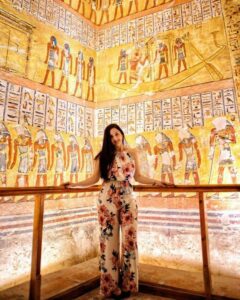 Valley of the Kings
Valley of the Kings
The Valley of the Kings, located on the west bank of the Nile near Luxor, Egypt, is a renowned archaeological site that served as the burial ground for many pharaohs of the New Kingdom period. From around the 16th to the 11th century BCE, this valley was chosen for its secluded and strategically hidden location amidst barren hills, aimed at safeguarding the elaborate tombs from tomb raiders. Today, visitors can explore several of these elaborately decorated and constructed tombs, each designed to house not only the physical remains but also the wealth and artifacts believed necessary for the afterlife. Among the most famous tombs are those of Tutankhamun, Ramses II, and Seti I, known for their intricate wall paintings, hieroglyphics, and stunning architectural features that reflect the ancient Egyptians’ beliefs in the afterlife and their reverence for their rulers. The Valley of the Kings remains a symbol of Egypt’s rich cultural heritage and continues to fascinate archaeologists, historians, and tourists alike with its wealth of ancient treasures and mysteries waiting to be uncovered.
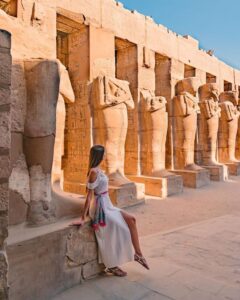 Hatshepsut Temple
Hatshepsut Temple
The Temple of Hatshepsut, located on the west bank of the Nile near Luxor, Egypt, is a stunning testament to the architectural prowess and political legacy of Queen Hatshepsut, one of ancient Egypt’s most remarkable rulers. Constructed during the 15th century BCE, this mortuary temple is carved into the cliffs of Deir el-Bahari and blends seamlessly with the surrounding natural rock formations. Its unique design features terraced colonnades, statues of the queen as a male pharaoh, and vivid reliefs depicting her divine birth and illustrious reign. Dedicated to the sun god Amun and showcasing Egypt’s New Kingdom splendor, the Temple of Hatshepsut stands as a masterpiece of ancient Egyptian art and a must-see destination for history enthusiasts and travelers alike.
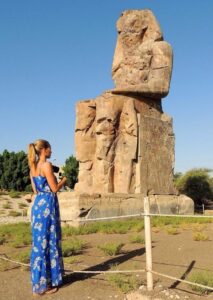
Colossi of Memnon
The Colossi of Memnon are iconic colossal statues of Pharaoh Amenhotep III, standing guard on the west bank of the Nile near Luxor, Egypt. These twin statues, each over 18 meters tall, depict the seated pharaoh in a dignified pose. Originally part of the Pharaoh’s mortuary temple, which was one of the largest in ancient Egypt, the statues have stood for over 3,400 years, surviving earthquakes and centuries of exposure to the elements. Today, they stand as impressive remnants of Egypt’s ancient past, attracting visitors from around the world who marvel at their size and historical significance.
 Lunch Time
Lunch Time
Enjoy a delicious lunch at a local restaurant in Luxor. Sample traditional Egyptian dishes and take a break to rest and recharge for the rest of the day.
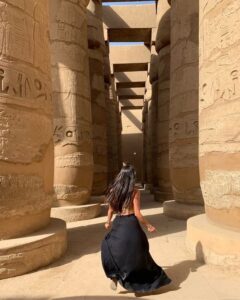 Karnak Temple
Karnak Temple
The Karnak Temple Complex, located on the east bank of the Nile River in Luxor, Egypt, is one of the largest religious complexes ever built. Dedicated primarily to the god Amun-Ra, Karnak was constructed over several centuries, beginning in the Middle Kingdom (around 2055 BCE) and continuing into the Ptolemaic period (around 30 BCE).
What makes Karnak extraordinary is its vast size and architectural diversity, featuring numerous temples, chapels, pylons, and obelisks spread over an area of about 200 acres. The most significant structures within Karnak include the Great Hypostyle Hall, a forest of towering columns adorned with intricate hieroglyphs and reliefs, and the Sacred Lake, believed to have been used for ritual purification.
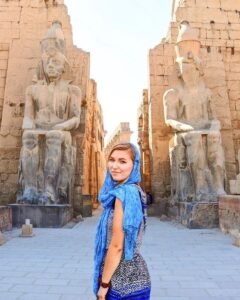
Luxor Temple
Luxor Temple, situated on the east bank of the Nile River in Luxor, Egypt, is a magnificent ancient Egyptian temple complex dedicated primarily to the god Amun. Built around 1400 BCE during the New Kingdom period, Luxor Temple was connected to Karnak Temple via the famous Avenue of Sphinxes, a processional pathway lined with sphinx statues.
The temple complex was expanded and modified over the centuries by various pharaohs, including Amenhotep III, Ramses II, and Tutankhamun, resulting in a blend of architectural styles and religious additions. Key features of Luxor Temple include its massive pylon entrance, towering obelisks (one of which remains standing), colossal statues of pharaohs, and beautifully preserved relief carvings depicting ancient Egyptian rituals and mythological scenes.









